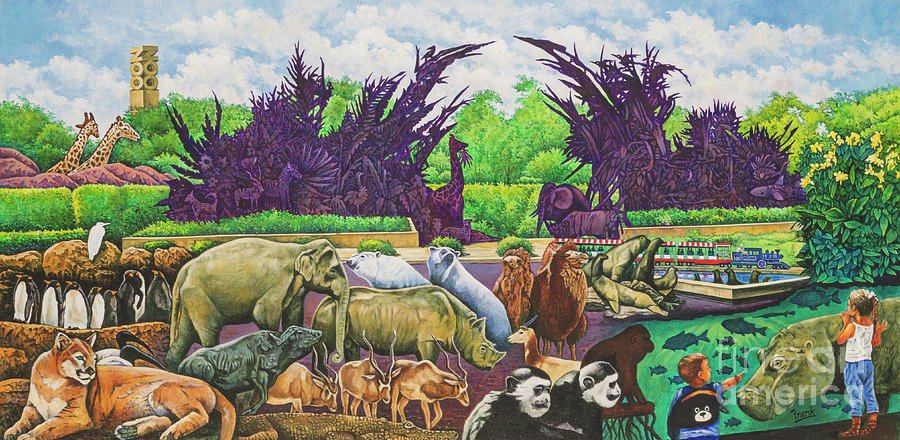Introduction
Animals have always held a special place in the hearts of humans. From ancient civilizations to modern society, animals have been a source of fascination, companionship, and inspiration. The bond between humans and animals is deep-rooted, and it is through the art of zoo that we can explore and celebrate this connection. In this article, we will delve into the significance of zoos, their role in conservation, the impact on education and research, and the ethical considerations associated with these institutions.
The Evolution of Zoos
The concept of zoos can be traced back thousands of years to ancient civilizations such as Egypt and Mesopotamia, where exotic animals were kept for the entertainment of royalty and nobility. However, it was during the 18th and 19th centuries that modern zoos as we know them today began to emerge. These institutions shifted their focus from mere entertainment to education, conservation, and scientific research.
The Purpose and Significance of Zoos
Zoos serve a multitude of purposes in today’s society. Firstly, they provide an opportunity for people of all ages to connect with animals and nature, fostering a sense of wonder and appreciation for the natural world. Zoos also play a vital role in conservation efforts by housing endangered species and participating in breeding programs to ensure their survival.
Furthermore, zoos serve as educational institutions, offering visitors the chance to learn about various animal species, their habitats, and the importance of biodiversity. Through interactive exhibits, presentations, and guided tours, zoos engage visitors and promote environmental awareness.
Conservation Efforts in Zoos
Conservation is at the forefront of many modern zoos’ missions. These institutions actively participate in species recovery programs, such as captive breeding and reintroduction initiatives. By providing a safe and controlled environment, zoos contribute to the preservation of endangered species, helping to prevent their extinction.
Additionally, zoos support conservation efforts through research, collaborating with scientists and conservation organizations to study animal behavior, genetics, and habitat preservation. The knowledge gained from these studies can be applied to in-situ conservation projects and inform policies aimed at protecting wildlife.
Education and Research in Zoos
One of the primary goals of zoos is to educate the public about the importance of wildlife conservation and environmental stewardship. Zoos offer a range of educational programs and exhibits designed to engage visitors of all ages. From guided tours and workshops to interactive displays and informational signage, zoos strive to create a learning environment that sparks curiosity and fosters a sense of responsibility towards the natural world.
Moreover, zoos contribute to scientific research by providing researchers with access to animal populations that are otherwise difficult to study in the wild. This enables scientists to gain insights into various aspects of animal biology, behavior, and ecology, ultimately contributing to our understanding of the natural world.
Ethical Considerations and Animal Welfare
While zoos play a crucial role in conservation and education, ethical considerations surrounding animal welfare have sparked debates and concerns. Critics argue that confining animals to enclosures deprives them of their natural habitats and restricts their freedom. It is essential for zoos to prioritize the well-being and welfare of their animal residents by providing spacious enclosures, enrichment activities, and appropriate veterinary care.
To address these concerns, modern zoos have shifted towards creating more naturalistic habitats that mimic the animals’ native environments. They strive to provide mental and physical stimulation through environmental enrichment, promoting natural behaviors and ensuring the animals’ overall welfare.
The Future of Zoos
As society evolves and our understanding of animal welfare and conservation deepens, zoos must adapt to meet new challenges. The future of zoos lies in striking a balance between conservation efforts, scientific research, education, and ethical considerations. Innovative approaches, such as immersive exhibits, virtual reality experiences, and collaborative partnerships with conservation organizations, will play a vital role in ensuring the continued relevance and success of zoos.
Conclusion
The art of zoo encompasses more than just the display of animals. It represents a harmonious connection between humans and the natural world, fostering appreciation, understanding, and responsibility. Zoos serve as gateways to environmental conservation, offering a unique platform to educate, inspire, and engage visitors of all ages. By combining the elements of education, research, conservation, and ethical practices, zoos can continue to be powerful catalysts for positive change in our relationship with animals and the planet we share.
FAQs
1. Are zoos beneficial for animal conservation? Yes, zoos play a crucial role in animal conservation by housing endangered species, participating in breeding programs, and supporting research initiatives.
2. Do zoos prioritize animal welfare? Modern zoos prioritize animal welfare by providing spacious enclosures, environmental enrichment, and veterinary care to ensure the well-being of their animal residents.
3. Are zoos educational for visitors? Absolutely! Zoos offer a range of educational programs, exhibits, and interactive experiences that promote learning about animals, habitats, and conservation.
4. What are some future trends in zoos? The future of zoos lies in immersive exhibits, virtual reality experiences, and collaborative partnerships with conservation organizations to enhance visitor engagement and conservation efforts.
5. How can individuals support zoos and their conservation efforts? Visiting zoos, participating in educational programs, and supporting conservation initiatives are great ways to contribute to the efforts of zoos in animal conservation and environmental education.

